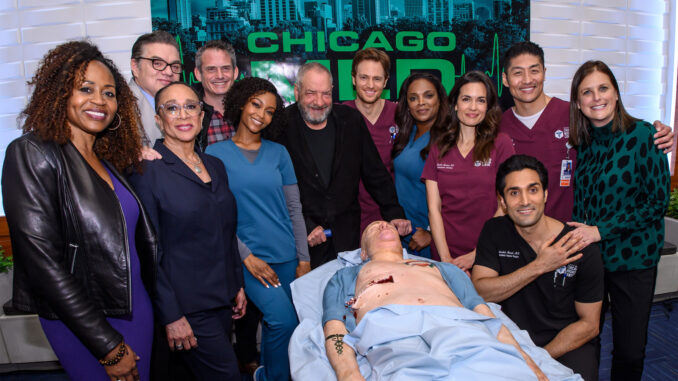
Most of the time it’s fairly innacurate. There is reasonable attention to detail (e.g. a pulmonary fibrosis patient scheduled for a lunt transplant had a monitor with a visible 89% oxygen saturation), the basic approach to the patients and their conditions is factually correct (e.g. they list the right procedures, diagnostic modalities and medications), but portrayed in a very wrong way.
Decisions are made very haphazardly with little to no concern about possible litigation (that sometimes does occur even in the show and the characters get in trouble for it). The way residents circumvent rules would shut the whole ED in short order in real life.
Most invasive procedures are done with simple non-sterile gloves and without any visible prep, which is really jarring, I mean, just make ’em put a different color gloves and slab a bit of brown goo on the patient, won’t take more than a few seconds of screen time. Most cardiothoracic cases are insanely off, I know I’m biased being a cardiac anesthesiologist myself, but still, almost nothing right. Speaking of that, the depiction of anesthesia is outright awful, but that’s a common theme among medical dramas, even ER (by far the most realistic one). I started yelling at the TV when I saw an already intubated patient being administered a huge dose of propofol just because the surgeon, scrubbed and with a blade in hand, said “let’s go”. The anesthesiologist answered with “putting her under”. I know it’s entertainment, I know us anesthesia peeps aren’t very spotlight-friendly, but if that’s the case, just don’t have the guy do anything on screen other than yap at the surgeons that pressure’s dropping every time they have a bleeder (they got that part right anyway).
There is also a tendency, I assume for dramatic reasons, for most cases to degenerate towards CPR or a crash intubation at the very least. In general, if your practice looks like that, you’re doing something very wrong. I’ll wager the audience would appreciate a nailbiter case being dealt with with specific emphasis on how the team managed to avoid an arrest. Nothing wrong with the occasional adrenaline rush on TV, but it gets stale very quickly, feels like a formula besides being an incorrect depiction of everyday medical practice, even in a trauma center.
So, not accurate, not by a long shot.
